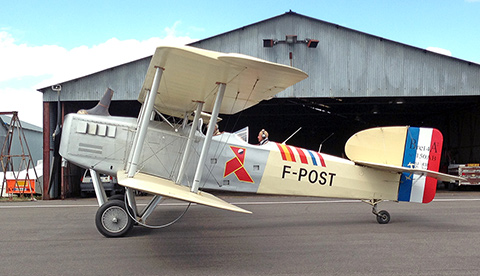
Breguet XIV MSN150 F-POST pictured in front of its hangar at the Moissac-Castelsarrasin aerodrome north of Toulouse where it is permanently based. The aircraft is actually a mix of replica and original parts without the legacy 300hp Renault 12 engine replaced in 2003 by a more modern and reliable 350hp Lycoming engine well hidden below the cowling which louvers have been hand-made to replicate those of the original motor. ©J.-M. Guhl
Toulouse, France, 29 July 2015 — Let’s go back in time… One century ago, in November 1924, four Breguet XIV biplanes, stacked in crates, left the La Palice harbor, near Bordeaux, in France headed for Rio de Janeiro in Brazil. Reassembled at Campos dos Afonsos — Brazil’s historical aerodrome located north of the then Brazilian capital Rio de Janeiro — these aircraft were soon, in 1925, to form the nucleus of the first air postal route ever in South America.
In order to pay tribute to these pioneers, this coming October and November, the only airworthy Breguet XIV existing in the world will re-enact the historical flight of these French aviators 90 years ago. The initiative, supported by the city of Toulouse, was launched by the preservation-minded Association Breguet 14 (www.breguet14.org) in order to recall the important achievement of the Liaisons Aériennes Latécoère — the future Aéropostale — of the 1920s in creating the first air mail routes between Brazil and Argentina, using surplus as well as new Breguet XIVs (built in Toulouse-Montaudran until 1928) to link three South American countries : Brazil, Uruguay and Argentina.
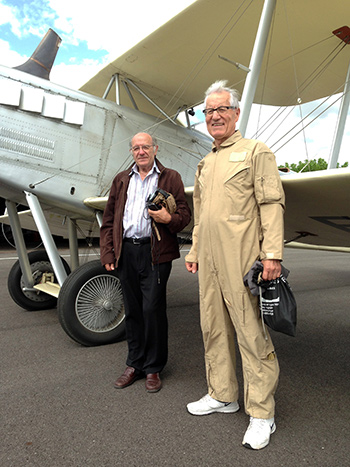
Eugène Bellet, president of the Association Breguet XIV, and Luc Gimazane-Teilhet, chief pilot, pose in front of the sole surviving airworthy Breguet XIV reconnaissance biplane built in Toulouse by Latécoère during WW1. They are the two veteran pilots who will fly the old biplane from Brazil to Argentina during this coming October and November. ©Jean-Michel Guhl
During its 8-week stay in South America, the Breguet XIV crew, led by Eugène Bellet and Luc Gimazane its two veteran pilots, will first be the host of Eduardo Paes, the mayor of Rio de Janeiro, and of general Nivaldo Luís Rossato, the commander of the Força Aérea Brasileira, before flying south to Montevideo in Uruguay, before finally crossing the estuary of the Rio de la Plata onto Buenos Aires’ Morón air base in Argentina, thus re-enacting the 90 years old postal airway with its famous stages in Santos, Florianópolis, Porto Alegre and Pelotas at the fantastic speed of… 140 km/h. The Breguet XIV F-POST will fly the route in and back spending some time during each stopover en route to be exhibited in public with the support of local associations and institutions, including the Association Internationale des Villes Escales de l’Aéropostale.
The Breguet XIV is often considered one of the best combat aircraft of World War 1, being used both for bombing and reconnaisance missions. A total of 26 air arms, including the French Aéronautique Militaire, flew this big biplane well into the century. Designed by Louis Breguet, who flew the first Breguet AV Type XIV (later to be shortened to Breguet 14) on its first flight on 21 November 1916, the big French biplane was to become one of the most famous aircraft of the conflict. It was built in very large numbers (over 7,000 copies ) and production continued for many years after the end of the war.
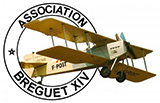 Apart from its widespread usage, it was noteworthy for becoming the first aircraft put in mass production to use a wide amount of metallic parts rather than wood in its structure. This allowed the airframe of the aeroplane to be lighter than a more traditional wooden airframe of the same strength, in turn making the aircraft quite fast and sprightly for its size, able to outrun many of the opponents of the time. Its strong construction was able to sustain much damage, it was easy to handle and had good performance. The aptly registered Breguet XIV F-POST is usually home-based near Moissac in France, at the Gandalou aerodrome shared by the municipalities of Moissac and Castelsarrasin in Tarn-et-Garonne, some 70 km north of Toulouse.
Apart from its widespread usage, it was noteworthy for becoming the first aircraft put in mass production to use a wide amount of metallic parts rather than wood in its structure. This allowed the airframe of the aeroplane to be lighter than a more traditional wooden airframe of the same strength, in turn making the aircraft quite fast and sprightly for its size, able to outrun many of the opponents of the time. Its strong construction was able to sustain much damage, it was easy to handle and had good performance. The aptly registered Breguet XIV F-POST is usually home-based near Moissac in France, at the Gandalou aerodrome shared by the municipalities of Moissac and Castelsarrasin in Tarn-et-Garonne, some 70 km north of Toulouse.
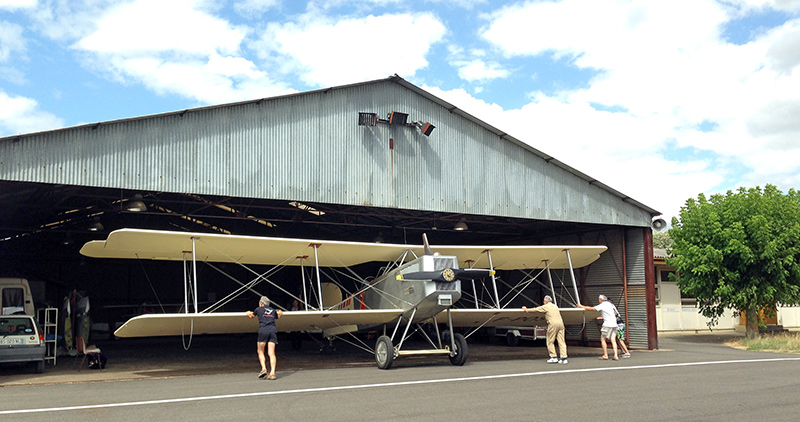
After its ultimate check flight before being dismantled for the long journey by boat from Marseille to Rio de Janeiro, the Breguet XIV F-POST is seen being pushed back in its Gandalou hangar on 27 July 2005. The aircraft is scheduled to be put back in flying order by Brazilian Air Force (FAB) personnel once at Base Aérea Campos dos Afonsos, north of Rio de Janeiro. From there it will fly in October and November next the Rio-Buenos Aires route in order to pay tribute to the “Mission Roig” of 1925 which saw the establishment of the first postal air link between Brazil and Argentina with the mythical French-owned Lignes Aériennes Latécoère, ancestor of L’Aéropostale. ©J.-M. Guhl
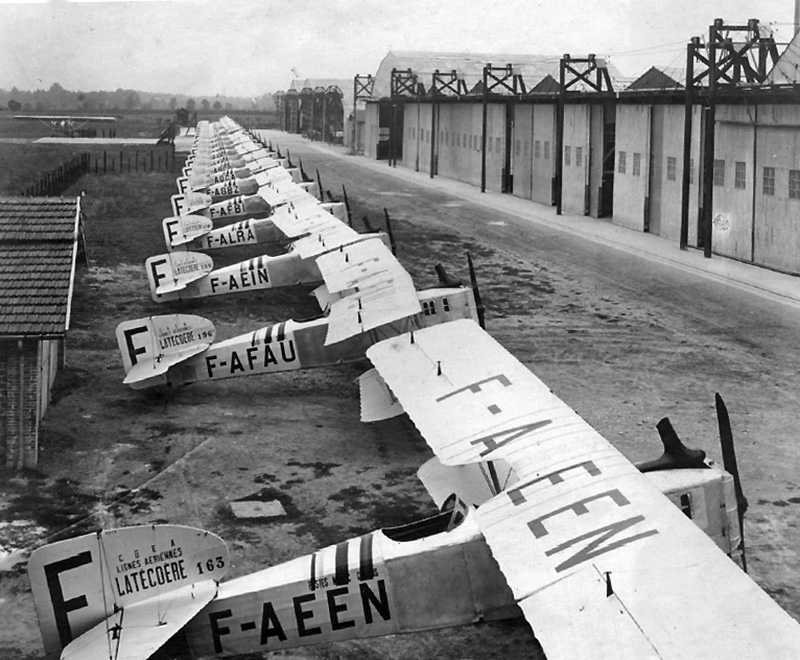
Part of the large Breguet XIV fleet of the Lignes Aériennes Latécoère at the Toulouse-Montaudran aerodrome in the 1920s. One century ago France was the leading nation in the field of aviation, thanks to the massive progresses made by the industry during WW1. Today, if the Montaudran airfield does not exist any longer (it was closed in 2003), Toulouse remains the European capital of aviation thanks to the presence there of the Airbus Group installed at the Blagnac international airport along with the ATR company and other first tier aerospace suppliers. ©Association Bre14
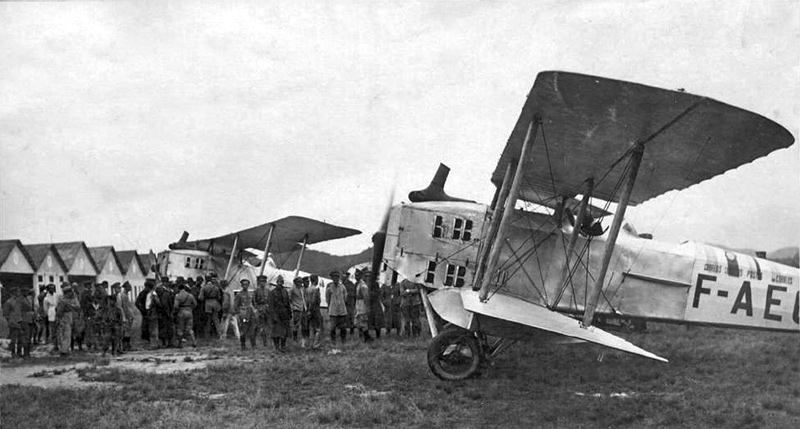
This image is 100 years old. Rio de Janeiro, 14 January 1925, the three Breguet XIVs of the “Mission Roig”, flown by Paul Vachet, Victor Hamm and Étienne Lafay, are seen about to leave Campos dos Afonsos (RJ) for the initial reconnaissance flights to São Paulo (SP), Florianópolis (SC), Porto Alegre (RS), Pelotas (RS), Montevideo (Uruguay) and Buenos Aires (Argentina). ©Association Bre14
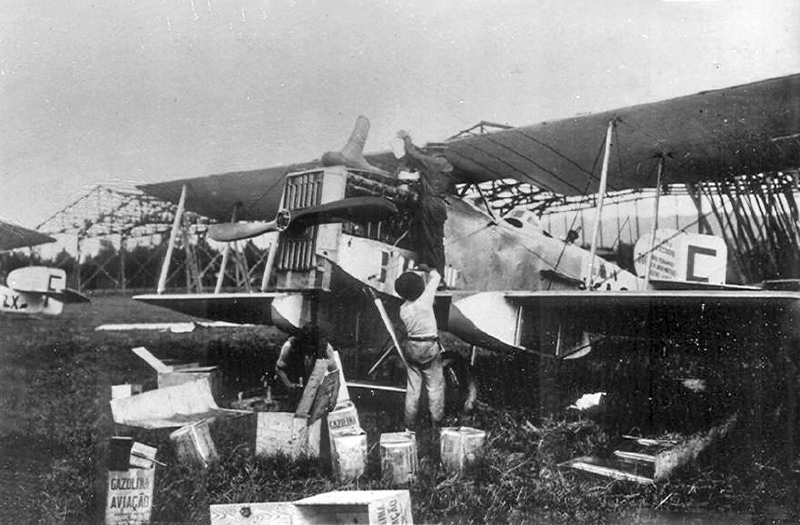
The Breguet XIVs of the Liaisons Aériennes Latécoère being refueled at Campo de Marte, then the only aerodrome of São Paulo. Today the small aerodrome has been swallowed by the Brazilian megapolis, but still exists as a very busy general aviation and heliport. Of note under the wings of this aircraft are the aerodynamic podded containers used to carry the mailbags. ©Association.Bre14
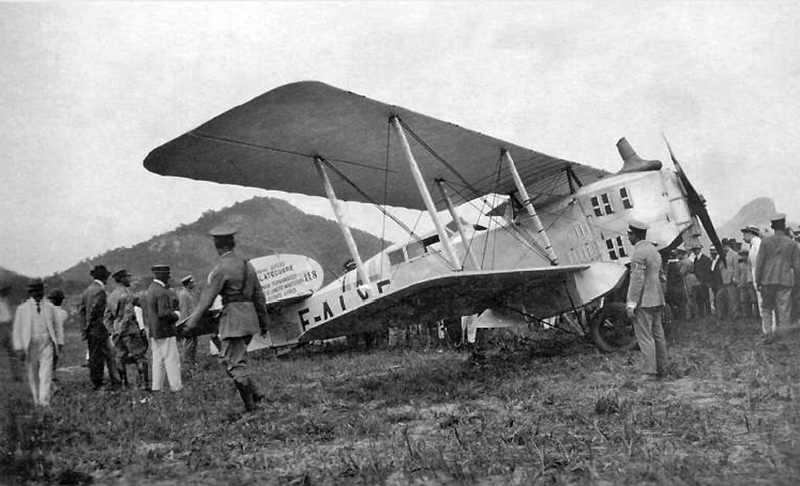
In February 1925, reconnoitering the air route north to Recife (PE) and Natal (RN), the Breguet XIVs of the “Mission Roig” are seen during a stopover at Vitória, the capital of the small Brazilian state of Espírito Santo. The provisional airfield then used by the French aviators is not far from that of the present Goiabeiras (ES) only opened as a true aerodrome after WW2. The aircraft pictured here (F-ALXE) is a Breguet XIVT.2 Salon (modified from a Bre XIVA.2) fitted with a framed cabin for two passengers positioned in tandem behind the pilot. ©Association Bre14
By Jean-Michel Guhl
